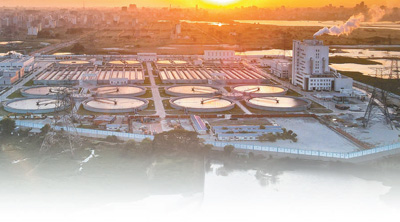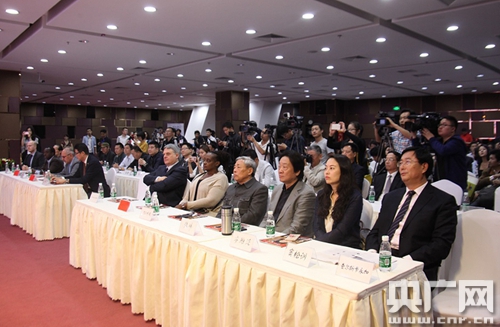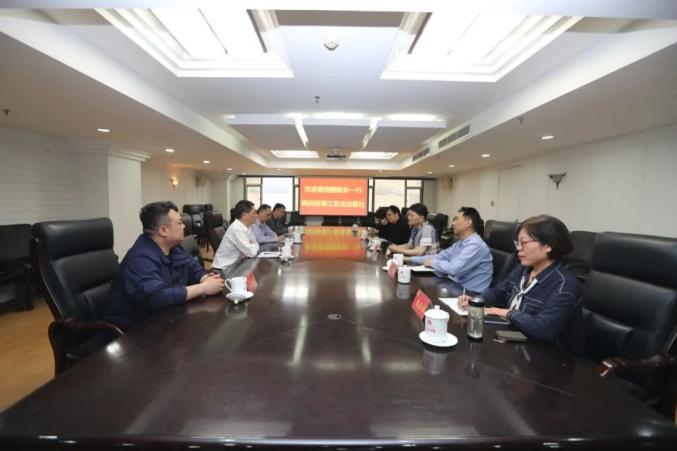There Is Broad Space For Investment And Cooperation In Jointly Building The "Belt And Road" (Global Hot Spot)
There Is Broad Space For Investment And Cooperation In Jointly Building The "Belt And Road" (Global Hot Spot)
In June 2024, in Sarawak, Malaysia, a floating photovoltaic power generation project under construction by China Energy Construction Jiangsu Electric Power Design Institute Co., Ltd. is under construction. (Xinhua News Agency) According to a recent report by the Financial Times website, a new study found

In June 2024, in Sarawak, Malaysia, a floating photovoltaic power generation project under construction by China Energy Construction Jiangsu Electric Power Design Institute Co., Ltd. is under construction. (Sented by Xinhua News Agency)
According to a recent report by the Financial Times website, a new study found that the amount of new investment and construction contracts for Chinese companies to jointly build the "Belt and Road" countries this year hit a record high. The "Overview of China's Overseas Investment (First Half of 2025)" recently released by Ernst & Young shows that in the first half of 2025, China jointly built countries and regions in the "Belt and Road" with a turnover of US$64.8 billion, a year-on-year increase of 7.5%.
From ports to power stations, from railways to photovoltaic projects, China has accelerated its overseas investment under the framework of the joint construction of the "Belt and Road" initiative. Experts believe that entering a new golden decade, the initiative to jointly build the "Belt and Road" is accurately connecting with global development needs and showing strong momentum in areas such as trade and investment, green transformation and scientific and technological cooperation.
Breakthroughs in technology and model innovation
According to data recently released by the Ministry of Commerce of China, in the first half of 2025, China's foreign direct investment showed a trend of "stabilization and quality improvement", with non-financial direct investment in countries jointly built by the "Belt and Road" reached US$18.9 billion, an increase of 20.7% year-on-year. From a longer cycle, from 2021 to the first half of 2025, the two-way investment scale between China and the co-construction countries exceeded US$240 billion, of which China's foreign investment exceeded US$160 billion, and the co-construction countries invested more than US$80 billion in China, and investment cooperation is becoming increasingly deepening. The International Monetary Fund, the United Nations Ministry of Economic and Social Affairs, the Asian Development Bank and other institutions paid great attention to the stable performance of China and the joint construction of the "Belt and Road" investment.
Kazakhstan's comprehensive investment project for drones and freight, Tencent Cloud's data center construction in Saudi Arabia and Indonesia, Meituan plans to spend US$1 billion to expand the Brazilian market within five years... Xie Laihui, director of the "Belt and Road" Research Office of the Institute of Asia-Pacific and Global Strategy of the Chinese Academy of Social Sciences, analyzed that China's investment in countries jointly built by the "Belt and Road" shows a strong growth trend, and investment projects have many highlights in scale, technology and cooperation models: the total investment volume has steadily increased; the investment entities show a trend of transformation from state-owned enterprises to state-owned enterprises and private enterprises; high-end manufacturing, digital economy, communication services and other new quality productivity-related fields have become highlights of investment growth, which reflects the breakthroughs of Chinese enterprises in technology overseas and model innovation.
Why can investment in jointly building the "Belt and Road" maintain strong growth? Experts pointed out that this is not only based on traditional factors such as policies, resources and markets that have been formed for a long time, but also driven by new motivations such as the upgrading of corporate globalization strategy and diversification of financial means. Investment in jointly building the "Belt and Road" has generally shown a pattern of steady progress and parallel tradition and innovation.
"At present, policy and resource guidance are still the traditional driving force for jointly building the Belt and Road Initiative. The development needs of Chinese enterprises to explore overseas markets and upgrade the globalization strategy provide continuous impetus for jointly building the Belt and Road Initiative investment growth. With the rapid rise of technological innovation, green transformation and emerging markets, the growth momentum of enterprises through market development has been continuously enhanced, providing support for overseas layout. In addition, diversification of financial means is improving the quality of investment in jointly building the Belt and Road Initiative. Enterprises significantly improve investment quality and efficiency through market-oriented resource allocation, and have performed outstandingly in overseas mergers and acquisitions." Xie Laihui analyzed.
Green energy becomes the highlight of investment
According to the statistics of the "China's "Belt and Road" Investment Report (First Half of 2025)" recently released by the Green Finance Research Center of Fudan University, China's energy investment in jointly building the "Belt and Road" cooperation this year hit a record high. Green energy cooperation also set a new record, with wind power, solar energy and waste power generation projects reaching US$9.7 billion, with an additional installed capacity of approximately 11.9 GW. The "new three" represented by new energy vehicles, lithium batteries and photovoltaic products are rising rapidly in the market for jointly building the "Belt and Road" countries.
The Financial Times quoted the report as saying that China's participation in the energy field in 2025 is the highest since the launch of the "Belt and Road" initiative.
"China is the most important driving force for global energy investment," said Fatih Birol, the director of the International Energy Agency. Russian Satellite News Agency quoted expert analysis and pointed out that China not only stabilized the global supply chain in green energy cooperation, but also provided stable and efficient production and technical support for the joint construction of the "Belt and Road" countries.
"Green energy cooperation has become a highlight of the deepening cooperation in jointly building the Belt and Road Initiative in recent years." Xie Laihui analyzed that China and the countries jointly building the Belt and Road Initiative reflect several major characteristics: First, the green energy cooperation industry chain is complete and the related product categories are complete. China can provide integrated solutions from production to consumption for cooperative countries; Second, green energy cooperation technology is leading, and China provides green energy technology with global competitiveness; Third, green energy cooperation adopts a strategy of adapting to local conditions, and cooperative projects choose diversified energy cooperation forms such as photovoltaics, wind energy, hydropower based on the resource endowments of various countries; Fourth, green energy cooperation has strong price advantages, can adapt to the economic affordability of developing countries, and promote rapid technology promotion. Compared with the cooperation plans of traditional developed countries, green energy investment in the joint construction of the "Belt and Road" cooperation takes into account both technical level and cost-effectiveness, and is more likely to be accepted by developing countries. This is also an important reason why the joint construction of the "Belt and Road" investment cooperation is very popular in the joint construction of the countries.
Enhance the ability to jointly build national independent development
According to the London Center for Economic and Business Research in the UK, by 2040, the Belt and Road Initiative is expected to drive global GDP to increase by US$7.1 trillion per year, with most of the revenue coming from improving infrastructure and promoting smooth global trade.
Pakistan's "Gulf Observer" website pointed out that China's Chinese-style modernization plan to adhere to high-quality development and high-level opening up to the outside world provides a development model for jointly building the country.
Xie Laihui emphasized that the joint construction of the "Belt and Road" initiative has established a South-South cooperation technology transfer network, covering ASEAN, South Asia, Arabia, Central Asia, Central and Eastern Europe, Africa and Latin America, providing developing countries with opportunities for technology catching up and industrial upgrading. This systematic platform not only optimizes the investment structure, but also enhances the participation and independent development capabilities of co-built countries in the global economy.
The World Economic Forum recently quoted a report released by the International Renewable Energy Agency as saying that global green capacity demand has maintained a rapid growth trend. In order to further achieve the goal of green transformation, the global installed capacity of renewable energy will need to increase by 16.6% per year by 2030, especially the huge potential demand for new energy products in many developing countries.
"Under the framework of promoting the construction of the 'Green Silk Road', Chinese new energy enterprises are actively deploying overseas, driving the Belt and Road Initiative to jointly build national energy transformation through investment, promoting the application and emission reduction process of clean energy, and improving energy security to a certain extent. This model provides developing countries with cost-controllable and local conditions, and promoting the formation of a virtuous cycle that promotes energy transformation, ensures energy security, and helps achieve carbon neutrality." Xie Laihui said.
Pakistan's Observer pointed out that in the environment of uncertainty in the global economy, China has helped the joint construction of the "Belt and Road" cooperation to help the joint construction countries catch the fast train of development and jointly drive towards a growth and sustainable future.
Gao Qiao Guo Yuheng





